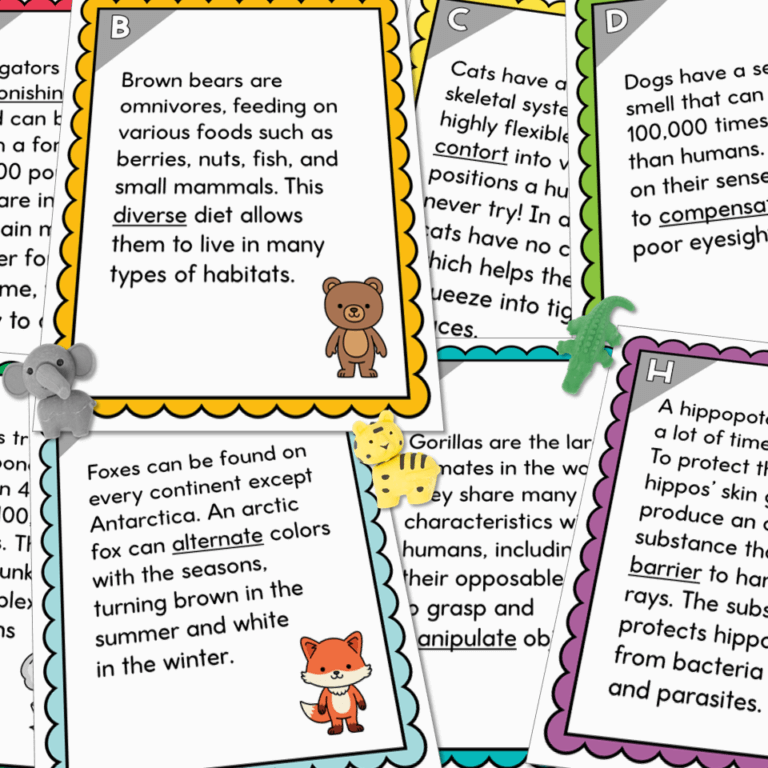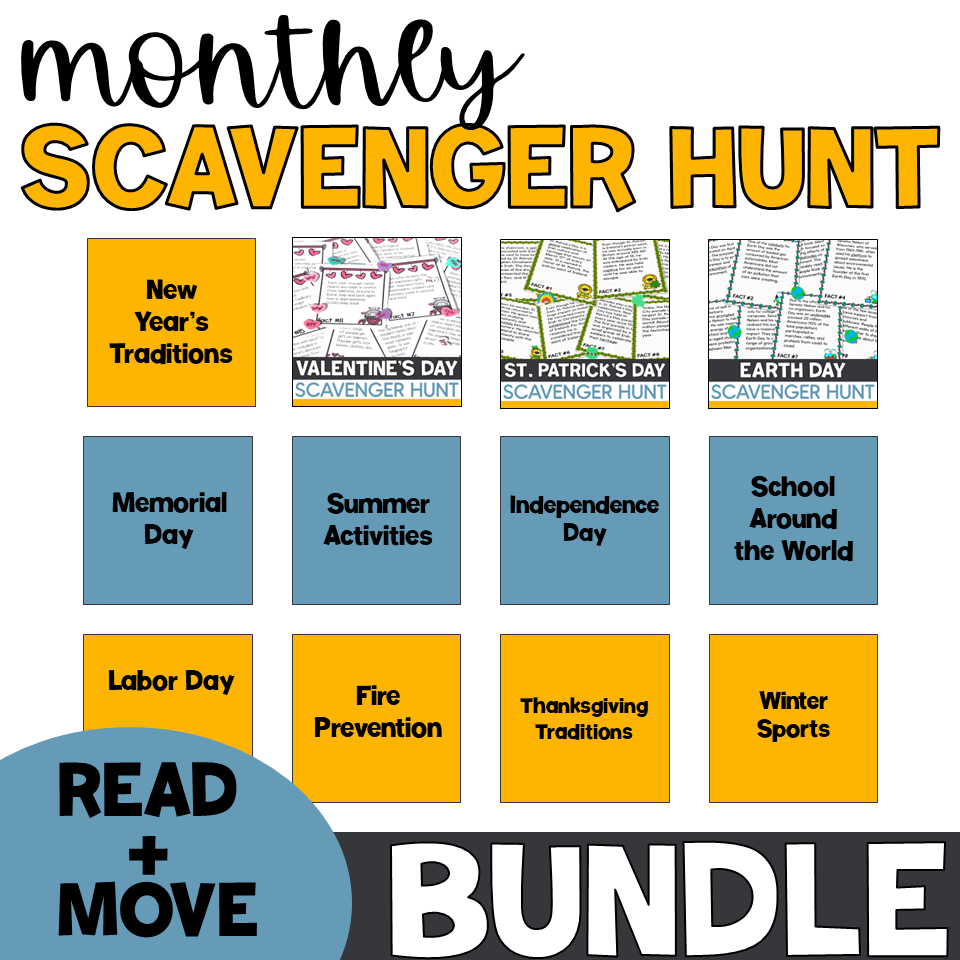How to Design a Classroom Scavenger Hunt Students Will Love!
Do your students need a quick boost of energy?
There’s no reason reading comprehension activities need to be tied to a desk. With just a few simple steps, you can take a blah lesson and turn it into an engaging activity your students will actually want to complete. Let me introduce you to…scavenger hunts!

No time for creating activities? Luckily, I’ve done the hard work for you! You can grab my Monthly Scavenger Hunt Growing Bundle on TPT, which includes everything you need in a ready-to-use format!
One of my favorite things to do is find activities I know students will love, and use them as a template to create fun lessons for just about any subject. You can create scavenger hunts for reading, math, science, social studies…and probably anything else you can think of.
However, before you get started, there’s a few things to keep in mind when designing a classroom scavenger hunt:
Set Clear Objectives
If you are creating your own clues, make sure to start with your lesson objective. Then, design clues that will help students practice that particular skill or strategy. I would suggest 20-30 cards for your hunt. This will depend on the size of your room as well as how long you want to spend on the activity. In general, I create my scavenger hunts with 24 cards.
If the objective you are teaching doesn’t have enough content for that many cards, consider combining more than one skill and using the scavenger hunt as a fun review.
Want to try a print-and-go scavenger hunt? Try out my Animal Adaptations Scavenger Hunt for FREE by clicking on the picture.
Create Ground Rules
It’s never fun when disruptive behaviors ruin an activity you’re excited about sharing. Scavenger hunts involve collaboration and movement, so it’s important for students to know your expectations BEFORE starting the activity.
For example, you may wish to have only a certain number of students at one card at a time. If you have an exceptionally chatty class, there may need to be a rule about only talking to members of your team.
Think about what you and your class will need to complete this activity successfully. Then, backward plan and make sure your rules cover any scenarios where learning may be disrupted.
One of my best tips? Know what early finishers will be doing as they wait for everyone else to complete the activity. Writing prompts related to the objective are a great way to keep students busy until the hunt is over.
Make It Challenging
Get creative when it comes to placing each clue card. Hide them in unexpected places, so finding all the facts is a challenge! In addition, make sure your students do something with the information they read. Create a recording sheet for each clue and have students write down their answers. If you’re feeling extra fancy, think of multiple ways students can use the scavenger hunt. For example, they can find the meanings of unknown words on each card.
No Time to Create Your Own Classroom Scavenger Hunts?
You’re in luck! I LOVE creating scavenger hunts and I’m working on a bundle of monthly hunts for busy teachers just like you.
Each scavenger hunt includes 3 ways to play: basic facts, vocabulary, and higher-order thinking (students synthesize information from all the clues in the hunt).
Head to TPT to check out the Monthly Scavenger Hunt Growing Bundle and lock in the best price (it goes up each time a new resource is added).
Ready to create your own scavenger hunts? Feel free to email me with any questions!
Happy Teaching!
Marianna






One Response